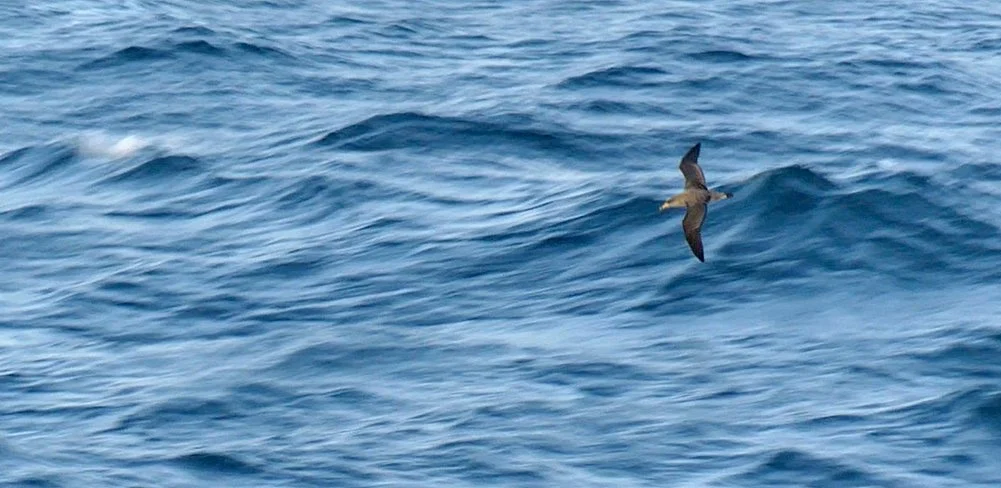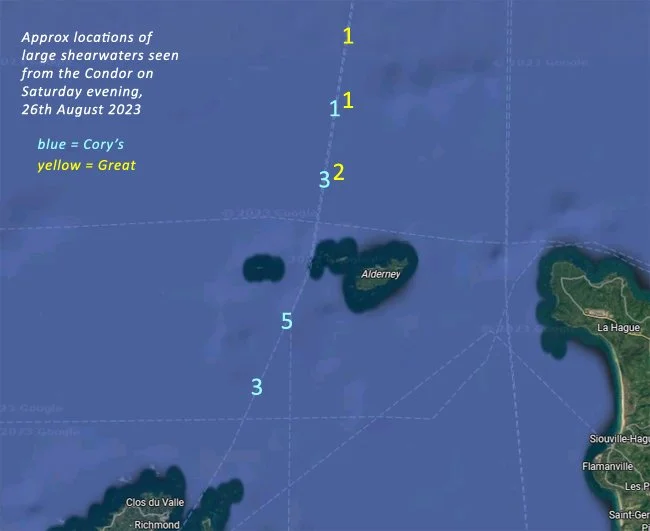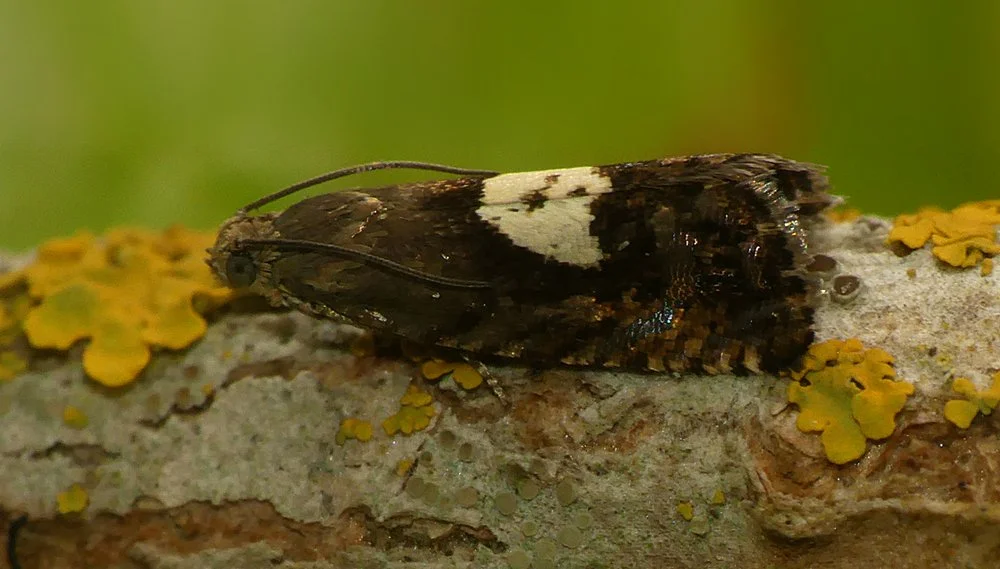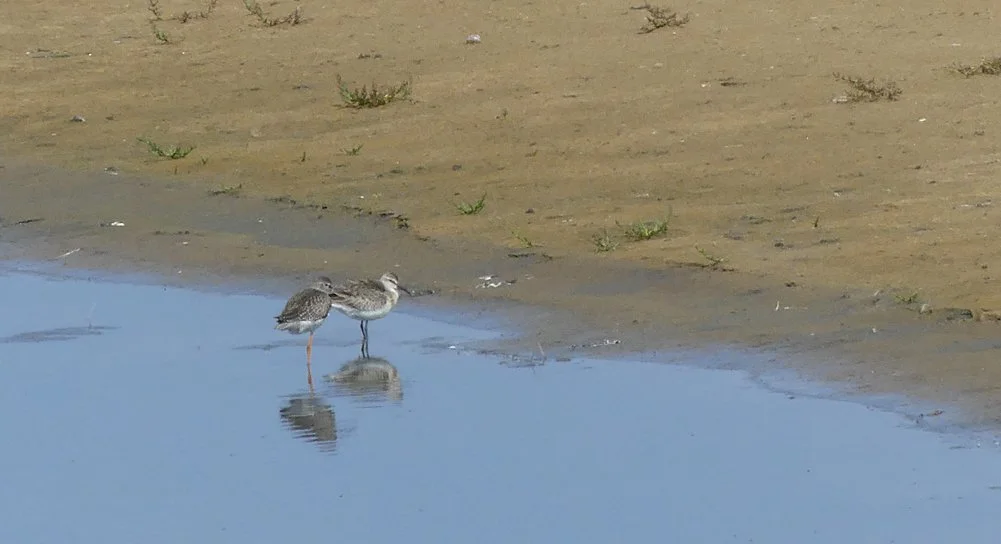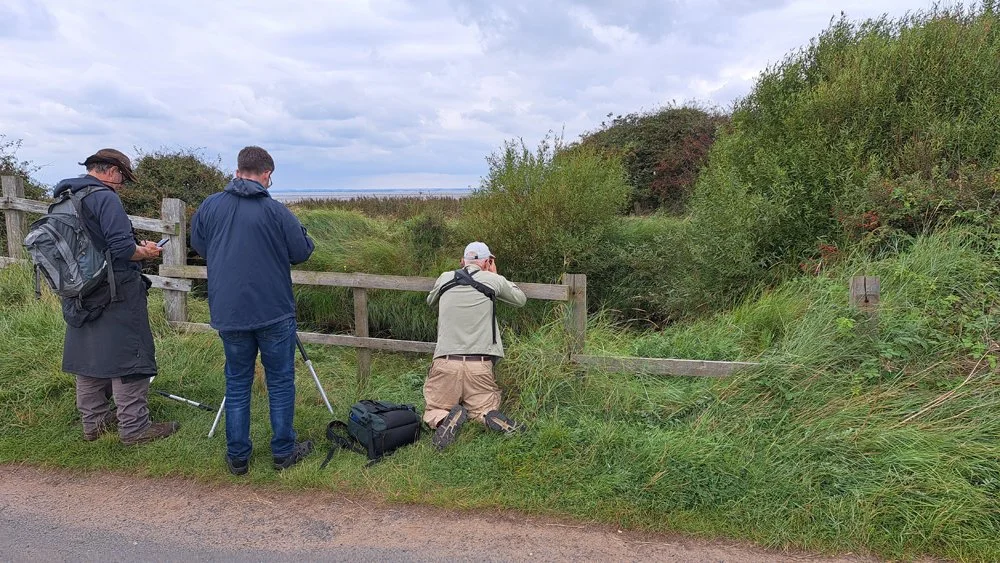August 2023 - trip to UK (part a)
/The COVID pandemic had scuppered our annual BUBO Lads meet-ups, so we were keen to do something this year after such a long break since our last trip. Rather than go somewhere abroad, we decided to make it simple and go for a few days birding in the UK. Spurn was pretty central and so we decided that was as good a place as any, and the last week of August can be good there for migrants and rarities depending on the right winds*.
(*spoiler, this was not to be the case)
Saturday 26th August 2023
Since I was by myself I decided that I’d go to England by car this time. I hadn’t been on the ferry for quite a few years and was looking forward to it, especially since there had been a lot of large shearwaters in the Channel recently and was hoping I may spot one. I must have been keener than I thought, as I rolled up to the ferry check-in a whole hour earlier than I needed to and wondered why it was so quiet. Well at least I was at the front of the queue - or at least I was until I fell asleep and had to have a knock on the window from the car behind me to wake me up to drive onto the ferry.
It was an evening sailing and so not totally ideal for seabirding, and I knew it would get dark half-way across, so had to make the most of the first hour. I took up my position in the corner of the viewing deck of the Liberation facing east to avoid glare. I have never seen very many seabirds from the Condor in the past. It is a very fast boat and you have to be very quick off the mark as the birds can race past you. The speed of the ferry also means that the wind and waves buffet you about a bit and it is hard to keep our bins on the birds. As soon as we rounded Fort Doyle I realised how windy and chilly it was and wrapped myself up very tightly. Pretty soon after leaving Guernsey behind and moving north towards Alderney I spotted a couple of Manx Shearwaters which was a good sign that seabirds were still active.
The next birds I saw were two superb Cory’s Shearwaters, as clear as day, pretty close to the boat. I have only ever seen a couple around here before, and those gave much poorer views. Despite the difficulty in keeping stable, I managed to see all the key features on the birds including a glimpse of a pale bill. I then picked out another, and then a few more and totted up eight birds before we’d passed Alderney - I was so excited. I was hoping I may see one or two but these were excellent.
After the ferry passes Alderney it then moves into slightly deeper water, approaching the east part of the Hurd Deep. A couple more Cory’s were noted quite quickly and the suddenly a Great Shearwater pops into view, flying with them. Even more exciting, the views were superb again, quite close to the boat and flying in the same direction - I even managed to pick out the dusky belly-patch, something I had never seen before. This was only my third ever sighting of Great Shearwater.
The low evening sun was out and was catching the birds undersides nicely and I decided to try for some video footage. I guessed that still photos were probably going to be difficult in the conditions, but I could probably get some on film and pick out some screenshots. You can see on the videos below how hard it was to keep still on that deck, but I managed to get a couple of usable clips and half-decent screenshots.
Cory's Shearwater - a few miles north of Alderney, 26 Aug 23 - a screenshot from the below video - even identiable as not a Scopoli’s I think.
Cory's Shearwater - a few miles north of Alderney, 26 Aug 23
Great Shearwater - a few miles north of Alderney, 26 Aug 23
Great Shearwater - a few miles north of Alderney, 26 Aug 23
In the end, before it go too dark, I had picked out at least 12 Cory’s and 4 Great Shearwaters which I considered a mighty success. Superb views of two species that I had never seen especially well before. About 8 Manx Shearwaters were seen and only a single Balearic. A dark-coloured skua which was seen nearer dusk was almost certainly Arctic Skua, and I did see a small flock of Kittiwakes. Perhaps this is going to be par for the course in the future, with large shearwaters becoming the norm from the cross-Channel ferry.
It soon got dark and I retired below to snooze in a chair that I had not booked. Arriving in Poole, my progress was hampered by a mystery queue which delayed us leaving the port for ages. I arrived at the Premier Inn near Southampton after 11 pm and was well-chuffed with a surprisingly eventful ferry trip.
Sunday 27th August 2023
The next day was ear-marked for driving north to Yorkshire to stay with my parents that night. There were not any rare birds on the way which I simply had to see, but I did want to break the long journey. I decided on a visit to RSPB Otmoor near Oxford. I would have preferred somewhere a little closer to my destination but the attraction here was possible Brown Hairstreak butterflies on the wing. However, when I got there I could see that it was not very good butterfly weather - very dull, a bit chilly and with occasional spitting - so it was not a huge surprise I didn’t see any.
Otmoor, 27 Aug 23
There were things to see here though and I rummaged around the vegetation looking for unfamiliar insects. There were plenty of crickets in the greenery, with Roesel’s Bush-cricket seemingly very common here. Also I saw a few Dark Bush-crickets, both species that do not occur on Guernsey.
Roesel's Bush-Cricket - Otmoor, 27 Aug 23
Dark Bush-Cricket - Otmoor, 27 Aug 23
Lepidoptera were few but I jammed into a new species when I saw a tiny tortrix just resting on a twig along the pathside. The white half-moon splodge with dark spots inside point to Pammene populana, a local species of wet woodland and marshy habitats.
Pammene populana - Otmoor, 27 Aug 23
Along the woodland rides there were quite a few Southern Hawker and Common Darter dragonflies patrolling up and down. Just before leaving I came across a different dragonfly perched forlornly on the side of the path. It would not fly away and I could have easily picked it up. It had one damaged wing which may have had something to do with it. I couldn’t immediately recognise it and took a series of photos. When I got to my books later that evening I was surprised to see that it was a Southern Migrant Hawker a new species for me and one that I wasn’t expecting to see so far north inland. This was the species me and Andy dipped on at Canvey Island a few years ago and here I had just jammed into it. Reading up, it seems that it has been seen quite a few times at Otmoor this summer and looks like it might be colonising, but a top sighting nevertheless.
Southern Migrant Hawker - Otmoor, 27 Aug 23
Southern Migrant Hawker - Otmoor, 27 Aug 23
Southern Migrant Hawker - Otmoor, 27 Aug 23
I didn’t see much else in my short time there, and very few birds indeed - although I didn’t get as far as the pools. A Muntjac showed well though which is not something I see every day. I hit the road again and made it to Driffield in good time to see the family for the evening.
Amphibious bistort - Otmoor, 27 Aug 23
Monday 28th August 2023
I drove down to Spurn the next morning and met up with Ian, Andy and John in the car park at Kilnsea Wetlands - with great timing we all managed to arrive within half an hour of each other. It was great to see the lads after so long, especially John who I had not seen for many years. There was nothing of rarity interest to go look at so we spent the middle part of the day at the wetlands and saw plenty of birds from the hides. I really enjoyed sitting in the hide and actually seeing birds in front of me. The hides here in Guernsey usually have a view of about 3 or 4 birds and it takes you 2 minutes to decide nothing is there. Sitting in these hides with birds flying in and out was pretty great. [We did return later in the day to the wetlands and lagoons and so I am not exactly sure which species we saw when].
Two Spoonbills were the most obvious scarce species on show and we also saw a Pintail and a Garganey. There were lots of waders to look at including Bar and Black-tailed Godwits, a few Avocets, lots of Ruffs, a few Knots, a Little Stint and a Curlew Sandpiper, to name a few. An Arctic Skua flew distantly over the beach and we did see one Little Gull. Migrant passerines were few apart from a handful of Yellow Wagtails.
Spoonbills - Kilnsea Wetlands, 28 Aug 23
Feeding godwits - Kilnsea Wetlands, 28 Aug 23
Curlew Sandpiper (with Redshank) - Kilnsea Wetlands, 28 Aug 23
We got some lunch at the visitor centre and wandered around the bushes there but it was quiet bird-wise. One would expect to find a few land migrants at Spurn at this time of year but we found more or less zero in the bushes today. We looked for some damselflies to no avail but we did flush a few Shaded Broad-bar moths, a species I had not seen for a while.
waders on the Humber shore, Spurn, 28 Aug 23
Back at the wetlands later in the afternoon, we saw many of the same species as before but a big highlight was 3 Short-eared Owls which came in to feed over the banks surrounding the lagoons. All three were up an once at some points and one came to land on a fence post not far from the hide.
2 Short-eared Owls - Kilnsea Wetlands, 28 Aug 23
Short-eared Owl - Kilnsea Wetlands, 28 Aug 23
Short-eared Owl - Kilnsea Wetlands, 28 Aug 23
There were a few invertebrates of interest in the area, with Sea Aster Colletes Bee and Lesser Marsh Grasshopper both being new species for me. Roesel’s Bush-crickets were everywhere, their high-pitched calls only just inside my range of hearing. Small Heath butterflies seemed quite common.
Small Tortoiseshell - Kilnsea Wetlands, 28 Aug 23
Small Heath - Kilnsea Wetlands, 28 Aug 23
Lesser Marsh Grasshopper - Kilnsea Wetlands, 28 Aug 23
We didn’t leave it too late to get to our Air B&B accommodation which was a static mobile home in a huge caravan park at Patrington Haven. It was just the ticket and we enjoyed a fabulous home-made curry brought by John for our tea.
Our home for the week - Patrington Haven Caravan Park which is almost literally a small town of static mobile homes
Tuesday 29th August 2023
John had brought his actinic moth trap and he had set it up just by the caravan. Weather conditions were not super-ideal for a good catch but there was a few interesting things in the morning including a new species for me, another tortrix - Cochylis hybridella. Most species were ones I get in Guernsey, but Mouse Moth was present which does not occur on the island and I have only seen once before. Bucculutrix maratima was a notable micro which had wandered from the saltmarsh a few miles south.
Cochylis hybridella - Patrington Haven, 28 Aug 23
Mouse Moth - Patrington Haven, 28 Aug 23
Flounced Rustic - Patrington Haven, 28 Aug 23 - looking very different from the ones I get in Guernsey
Back down to Spurn we did similar areas to the previous day visiting Kilnsea Wetlands and also the area around the Warren. There was a little bit more activity in the latter area today than the previous day and we had a few more migrants through. A Garden Warbler, Willow Warblers, a Cetti’s Warbler, a single Swift south and a few more Yellow Wagtails. Still not a lot but better. We had a longer look for Willow Emerald damselflies at Pallas’s pond and were rewarded with a couple resting in the vegetation - I don’t think they get much more north than this (at the moment). John pointed out some saltmarsh plants and I think I had five new species in just one area. We had a little seawatch but there wasn’t much passing just a flock of Common Scoter and a couple of Porpoise.
Searching for damselflies at Pallas’s Pond
Golden Plovers - over Humber Estuary, Spurn, 29 Aug 23
Golden Plovers - over Humber Estuary, Spurn, 29 Aug 23
Saltmarsh vegetation including Spartina and sea-lavender - Humber Estuary, Spurn, 29 Aug 23
Sea Wormwood - Humber Estuary, Spurn, 29 Aug 23
Back at the Kilnsea Wetlands hide we were rewarded (if that’s the appropriate word) with a juvenile Caspian Gull. This was actually a British tick for me technically as I have only recorded Caspian in Guernsey before. I was well excited. Additional birds we saw today that we didn’t yesterday included a Spotted Redshank, six Little Gulls, now 10 Curlew Sandpipers and a lot more gulls and terns in general. But again it was a day when no rare birds were seen at Spurn.
Caspian Gull - Kilnsea Wetlands, 29 Aug 23
Caspian Gull - Kilnsea Wetlands, 29 Aug 23
When we heard about a Red-backed Shrike in some fields north of Easington we thought it would be worth going to see it as it was the nearest thing to a rarity that was around. But after a fruitless search we decided it wasn’t going to be our day and resigned ourselves to a rarity-free week. It summed up our luck when, just as John was driving into the caravan site his tyre deflated to flat in seconds! Ah well, its a good job we had such good company, and we enjoyed Ian’s cooking, a few beers and the world premier of the top birding card game that’s sweeping the nation - “Name That Bird!”.
Ian searching for a Red-Backed Shrike in fields north of Easington


